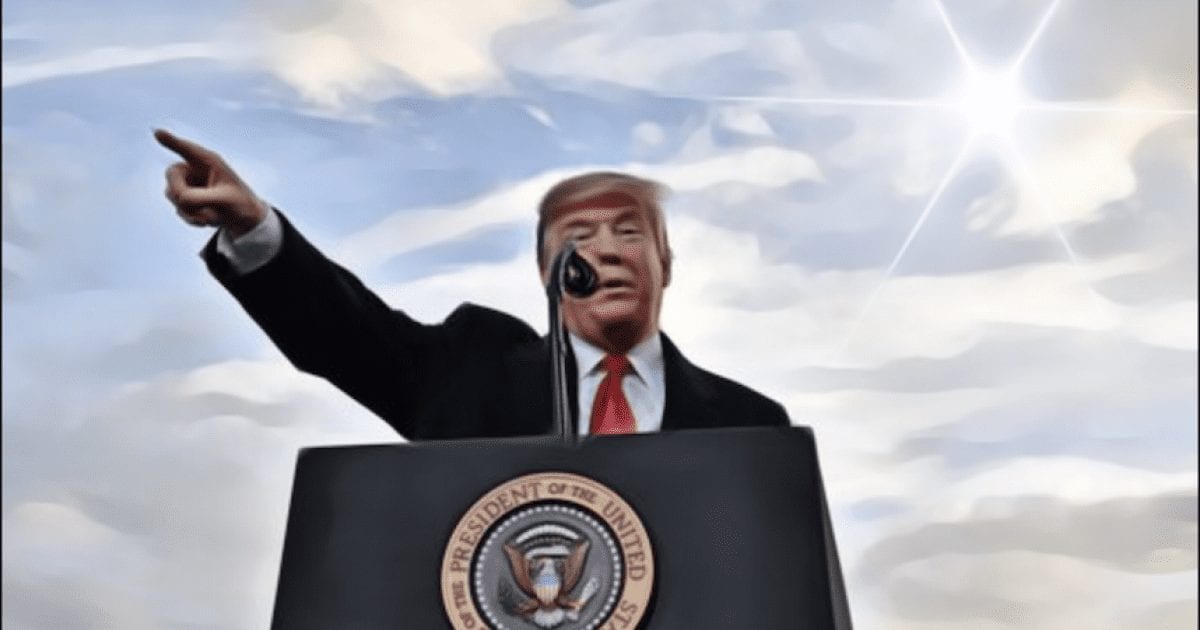The government is such a bloated waste of a machine.
Have any of you ever ran a business?
If so, you understand that if you had “non-essential” employees, you’d quickly go out of business.
Anyone with any basic business sense knows that if you’re paying non-essential people, the economics don’t work.
Business is not a charity. Employees either need to contribute to the bottom line or be at risk of being let go.
The problem with government is that it never runs like a business.
At least until Donald J. Trump got there.
So with the man famous for saying “You’re Fired!” now in charge at the White House, let’s take a closer look at what “non-essential” means, and see just how much of government is “non-essential”….
Incredible! 95%!
Those are absolutely staggering figures.
Oh, and in case this wasn't immediately obvious, let me remind you that YOU AND I are the ones footing the bill with our taxes!
Makes me sick.
Here's more, from ConservativeReview:
The eight-year run of GOP control of the House of Representatives is coming to an end. The partial government shutdown in the eleventh hour of Republicans’ control is mainly centered around their failure to push border security when they had control, particularly over the past two years. But the fact that so much of government is shut down this week and nobody noticed should demonstrate that Republicans have also failed to cut elements of government that are evidently invisible to all but those who work at those agencies. If Republicans were smart, they would use this imperceptible shutdown to lay the groundwork for a spending fight during the debt ceiling deadline next year.
Now that Pelosi is slated to take over the House, we can post the full tally of GOP debt accumulation over the past eight years since Republicans were ushered into power in the year of the Tea Party. Since John Boehner was put into the speaker’s chair and handed the gavel on January 3, 2011, the debt has increased from $14 trillion to $21.86 trillion, a tab of almost $8 trillion. Just this past year alone, Republicans have increased the debt by almost $1.4 trillion. And in the first two months of fiscal year 2019, the deficit has increased by $305 billion, despite record revenue.
Not only have Republicans failed to cut a single agency of government, they have grown all of the programs Trump promised to cut. Republicans have increased or suspended the debt limit seven times since taking over the House. The only spending cuts they secured were the ones we won in August 2011 by actually blocking an automatic debt ceiling increase. However, that hard-fought and rare victory was completely wiped out by the budget bills in February and March of this year, which dramatically increased spending while suspending the debt limit yet again until March 2019. Now, with interest rates rising fast, we face a crisis just on the interest payments, which are slated to surpass the cost of the military in five years.
But with Pelosi scheduled to take control of the House next week, a GOP committed to reducing the size of government could use her as the perfect foil to push concessions in return for raising the next debt limit. She will be forced to either look weak by giving Trump a blank check for more debt or raise taxes without cutting spending. This week’s stealth shutdown, however, should provide conservatives with the perfect opportunity to distinguish the fat from the muscle of government largesse and craft a plan to reduce the debt.
According to OMB data compiled by Government Executive, here are the percentages of federal employees deemed “nonessential” by department (among those departments that don’t already have full fiscal year 2019 appropriations):
HUD – 95.4%
Commerce – 86%
Treasury – 83.3%
Interior – 76%
Agriculture – 66.5%Obviously, most of the employees of the DHS and Justice are deemed essential and are working this week. But why is nobody asking what can be cut from these agencies with such high percentages of nonessential personnel? The media will virtue-signal over the paychecks of these federal workers, but if the only effect we see from their absence is their own paycheck, shouldn’t we have a debate over how many of these positions should exist in the first place, especially in light of a debt crisis?
These are just the departments that are not funded this year. Also, a certain percentage of these departments will not be furloughed even though they are deemed nonessential because they are already funded by appropriations of cross-sectional programs from other departments that have already received full-year funding. There are many more agencies that are already funded but are full of wasteful positions. To get a better sense of how many workers are deemed nonessential during a complete shutdown, here is a breakdown of how many workers are nonessential among all departments that were subject to the 2013 appropriations lapse, when the entire nonessential government shut down.
Here are some more targets for conservatives in the upcoming debt ceiling fight:
EPA – 95%
Education – 95%
Labor – 81%
Energy – 69%In total, 43 percent of the federal workforce was furloughed during the 2013 shutdown, but many departments and agencies had as many as 80-95 percent of their employees deemed nonessential. Shouldn’t those departments be the first place for any audit on cutting government? Isn’t this pure common sense, irrespective of one’s political ideology? Of course, nonessential is not synonymous with a completely unnecessary job, but when those workers are the overwhelming majority of staff in a given department, one must ask why the federal government should have that agency in the first place?
Here's more, from Newsweek:
Who are the employees deemed nonessential?
“I personally feel like saying nonessential is kind of like if you go on vacation, we can find a way to make sure that work gets done if you take a weeklong vacation,” Jessica Klement, a legislative director for the National Active and Retired Federal Employees Association, said in 2013.
“It’s not that your job isn’t important. It’s that while Congress is busy trying to get its act together, we can figure this out without that person there,” she continued.
During this shutdown, however, there are few operations closing completely.
The shutdown, contrary to President Donald Trump's belief, does not halt active-duty military operations. Military members report to work, but their pay could be threatened.
U.S. Postal Service workers will still deliver mail, as their work is not funded by taxpayer dollars.
Only 9 percent of Internal Revenue Service employees reported to work during the last shutdown. You're still required to pay taxes, but any refunds could potentially be delayed, depending on the extent of the shutdown.
Social Security and food stamps are categorized as essential services and therefore will continue to be issued. Medicare and Medicaid are still running, as well as veterans’ hospitals.
Travel will most likely be unaffected, as airports will remain open. Air traffic controllers, Transportation Security Administration officials and border patrol agents are considered essential employees. Amtrak trains will not be affected, and neither will the National Weather Service.
National parks and national monuments will remain open, unlike their status during the 2013 government shutdown. The National Zoo and the Smithsonian museums, which remained open Saturday and Sunday, will be closed starting Monday.
And from the Washington Examiner:
If nothing so focuses the mind as the prospect of being hanged in the morning, then being declared non-essential in a government shutdown must do the same thing for federal bureaucrats.
The horror of the "non-essential" label was so great in fact that the Office of Personnel Management, which manages the 2.1 million member federal workforce, stopped using the term a few years ago. Now the official terms are "excepted" and "non-excepted."
But "essential" and "non-essential" more precisely capture the essence of the process for how officials decide which government workers must report to work during a shutdown because America cannot do without their services. And who can be spared.
Which brings us to Government Executive magazine and its truly staggering chart of essentials and non-essentials by major federal departments and agencies, according to those same departments and agencies.
Fully 95 percent of the Environmental Protection Agency's employees are non-essential. It's 96 percent at the Department of Housing and Urban Development, 95 percent at the Department of Education, and 90 percent at the Department of the Treasury. The overall average for the government is 43 percent.




Join the conversation!
Please share your thoughts about this article below. We value your opinions, and would love to see you add to the discussion!